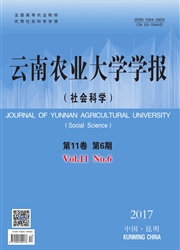

 中文摘要:
中文摘要:
用烟草花叶病毒弱毒株系N14预先接种,可以诱导烟草对病原真菌赤星病菌的系统获得性抗性(SAR),减轻病菌引起的赤星病。选择表现诱导抗性最强植株材料进行组织培养与植株再生,通过体细胞无性系变异增强和巩固SAR性状,获得SAR组成性表达的突变体(constitutive expresserofSAR)ces2-1。除了抗病表型,ces2.1还组成性表达多种防卫反应基因。回交实验与遗传分析表明,ces2.1是在野生型位点上的单基因显性突变。对ces2.1与野生型进行mRNA差异显示分析,得到一个ces2.1独有、在野生型中缺少的转录本,与前人报道的烟草受过氧化氢诱导的一个基因片段同源。用cDNA末端快速扩增技术克隆了这个转录本的全长序列,根据生物信息学分析与功能的初步测定,把这个基因命名为烟草受过氧化氢诱导的抗病相关基因(hydrogen peroxide-induced 1,NtHP11)。
 英文摘要:
英文摘要:
Inoculation of tobacco (Nicotiana tabacum) with the hypovirulent strain N14 of tobacco mosaic virus induced the plant to develop systemic acquired resistance (SAR) against Alternaria alternata, a fungal pathogen that causes brown spot in tobacco. After a somaclonal variation protocol was applied to leaf discs from resistant plants, regenerated plants were screened for constitutive expresser of SAR. This protocol yielded a mutant designated as ces2-1. In ces2-1, resistance to the pathogen no longer required induction treatment, and the expression of several defense resistance genes, such as PR-1 a and ChiaS, also became constitutive. Genetic analyses of the backcross revealed that ces2-1 re- presents a disruption at a single gene and is dominant in heredity over the WT locus. The profile of differentially expressed cDNA identified a transcript highly identical with a hydrogen peroxide-induced cDNA fragment already isolated from tobacco. The transcript was present in ces2-1 but absent in WT and was thus considered important in resistance. Full length of the transcript gene was cloned by a rapid amplification of cDNA end protocol and named NtHPI1 based on bioinformatics and experimental analyses.
 同期刊论文项目
同期刊论文项目
 同项目期刊论文
同项目期刊论文
 Wang et al. 2009 Nicotiana tabacum TTG1 contributes to ParA1-induced signalling and cell death in le
Wang et al. 2009 Nicotiana tabacum TTG1 contributes to ParA1-induced signalling and cell death in le Transcription Factor AtMYB44 Regulates Induced Expression of the ETHYLENE INSENSITIVE2 Gene in Arabi
Transcription Factor AtMYB44 Regulates Induced Expression of the ETHYLENE INSENSITIVE2 Gene in Arabi Root Growth of Arabidopsis thaliana is regulated by ethylene and abscisic acid signaling interaction
Root Growth of Arabidopsis thaliana is regulated by ethylene and abscisic acid signaling interaction Chen L et al., 2008. Identification of specific fragments of HpaGXooc, a harpin from Xanthomonas ory
Chen L et al., 2008. Identification of specific fragments of HpaGXooc, a harpin from Xanthomonas ory 期刊信息
期刊信息
